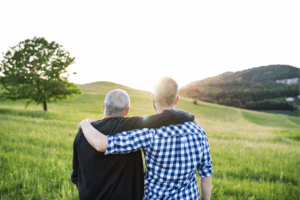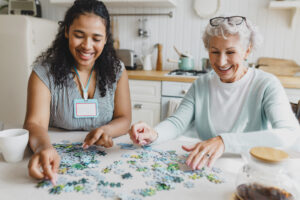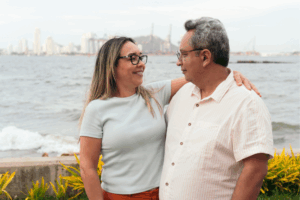When California voters passed Proposition 64 last November, legalizing (with restriction) the cultivation, sale, and use of marijuana, it opened up a whole new cultural and economic world for the state. New businesses are flourishing, the tax base is expanded, and fewer people are being arrested for nonviolent crimes. But it also comes with misinformation and misunderstandings, and those are important to clear up.
Older adults in San Francisco have long had access to medical marijuana, depending on their health and needs, but in this more open world there are more opportunities, and more dangers. Like any other substance, there are safe and unsafe ways to use marijuana, either mitigating or amplifying health problems.
So, if you’re an older adult, and already apprised of the nature of the California marijuana law, now might be the time to decide how—and if—you plan to partake in marijuana. Whether for health reasons, pain relief, pleasure, or a combination of the three, it’s important to do it right, and do it safely. It might be a new world, but that doesn’t mean the old rules don’t still apply.
Beyond the Hype and Hysterics of Marijuana
First off, please don’t think that using marijuana makes you “weird” due to social stigma. Attitudes are changing along with increased usage. According to the Alcohol and Drug Abuse Institute at the University of Washington, “from 2002-2014 the proportion of adults aged 50 to 64 who reported cannabis use in the past year more than tripled from 2.9% to 9.0%. Among adults aged 65 or older, the proportion increased more than tenfold from 0.2% to 2.1%.” So this is certainly not unusual. But, you’ll also find that nearly everyone has an opinion on the matter.
Let’s get one thing out of the way: neither the utopians nor the drug hysterics have a monopoly on truth. Marijuana is not the cure-all for everything, nor will it send you into a fit of snack cravings. Instead, like every other substance, it has benefits and drawbacks that vary with each individual.
But, as with any other substance, understanding that it is neither all good nor all bad is just the first step. The most important step is understanding if it is good or bad for you, specifically.
Don’t Be Afraid to Consult Your Doctor First
If you’re an older adult (or a caregiver of one), chances are you’re already taking a lot of medications. Many medications give advice like “do not consume alcohol after taking.” Chances are that none of them recommend against cannabis, but that’s partly because the law just took effect, and so it’s too early for that to be the case. That doesn’t mean it’s fine to mix.
The best advice, if you’re on medications, is to consult with your doctor before using marijuana. It could have no impact whatsoever (marijuana and alcohol are very different) or it could be considered unwise. Right now, it’s too early to have any widespread conclusive data, so checking with your doctor is always good advice.
But, if you have clearance, what next? There are a lot of different ways to use marijuana, and how you choose to partake depends on health issues, availability, and personal choice.
Choosing the Form of Marijuana That’s Right For You
While joints and bongs are the most famous ways to take marijuana, they are far from the only way, and far from the best. After all, you’re still inhaling smoke. While marijuana doesn’t contain the same amount of carcinogens as most tobacco products, it can still be damaging to your lungs. If you feel that smoking or inhaling is the best way for you, that is of course fine, but don’t think that because you don’t want to smoke you don’t have options.
Cannabidiol: Relief Without the High
Not everyone is looking to get high or buzzed off marijuana, and its effects on mood and mental state are a reason why many older adults avoid marijuana altogether. But scientists have been working on a strain called cannabidiol that can ease inflammation and pain, stimulate bone strength, reduce mental anxiety, and actually increase concentration. If you want proven benefits of marijuana without the high, looking to cannabidiol might be your best bet.
Different Strains for Different Pains
Of course, maybe you are looking for a little high, or a lot, or aren’t sure. It’s important to remember that there are many different strains of marijuana providing varying impacts, from gentle happiness to “staring at the wall for six hours.” When you go to the dispensary, ask the person behind the counter which strain might be right for you. Go in with an understanding of what you want it for, and what you hope to get out of it. These stores are staffed with knowledgeable and (very) passionate people. Take advantage of that.
Ointments Get Under Your Skin
Marijuana-based ointments and lotions have become more popular if you’re someone looking for the healing benefits of marijuana without putting anything inside your body directly (it will, of course, be absorbed in, but it’s a slower process). These are great for sore muscles, arthritis, and back pain.
Incredible Edibles
If you do want to enjoy marijuana without smoking, there are a million different ways to do so. Cannabis oil can be incorporated in a lot of different formats, including:
- Candies
- Lozenges
- Chocolate bars
- Pills
- Baked goods
- Infused honey
- Liquid extracts
- Tinctures
- Butters
- Oils
Really, if you can imagine something imbued with marijuana, someone has probably already made it. Be smart and sensible. Thanks to the new California law, it’s entirely up to you how you choose to partake.
Older adults who don’t want to try, don’t have to, and those who do can without any legal fear. As we discussed, there are limits of course: the law only protects carrying up to one ounce, and only applies to people over the age of 21. You can grow up to six plants at your home, but only if they aren’t in public view. In other words: common sense. It’s also common sense to consult with your doctor, and figure out what method of use is right for you.
Apart from health considerations, what marijuana usage comes down to is how you decide to live your life. Whether we are talking about taking up painting in your 10th decade or deciding to smoke some pot, there should be no artificial or external limitations placed on older adults. You are free to make your own smart and safe decisions. You’re never too old to try something new, to explore life, and to find out what will continue to make you happy.
Institute on Aging offers a wide range of programs and services that help older adults live freely and with a spirit of adventure. Get in touch with us today to learn more.







